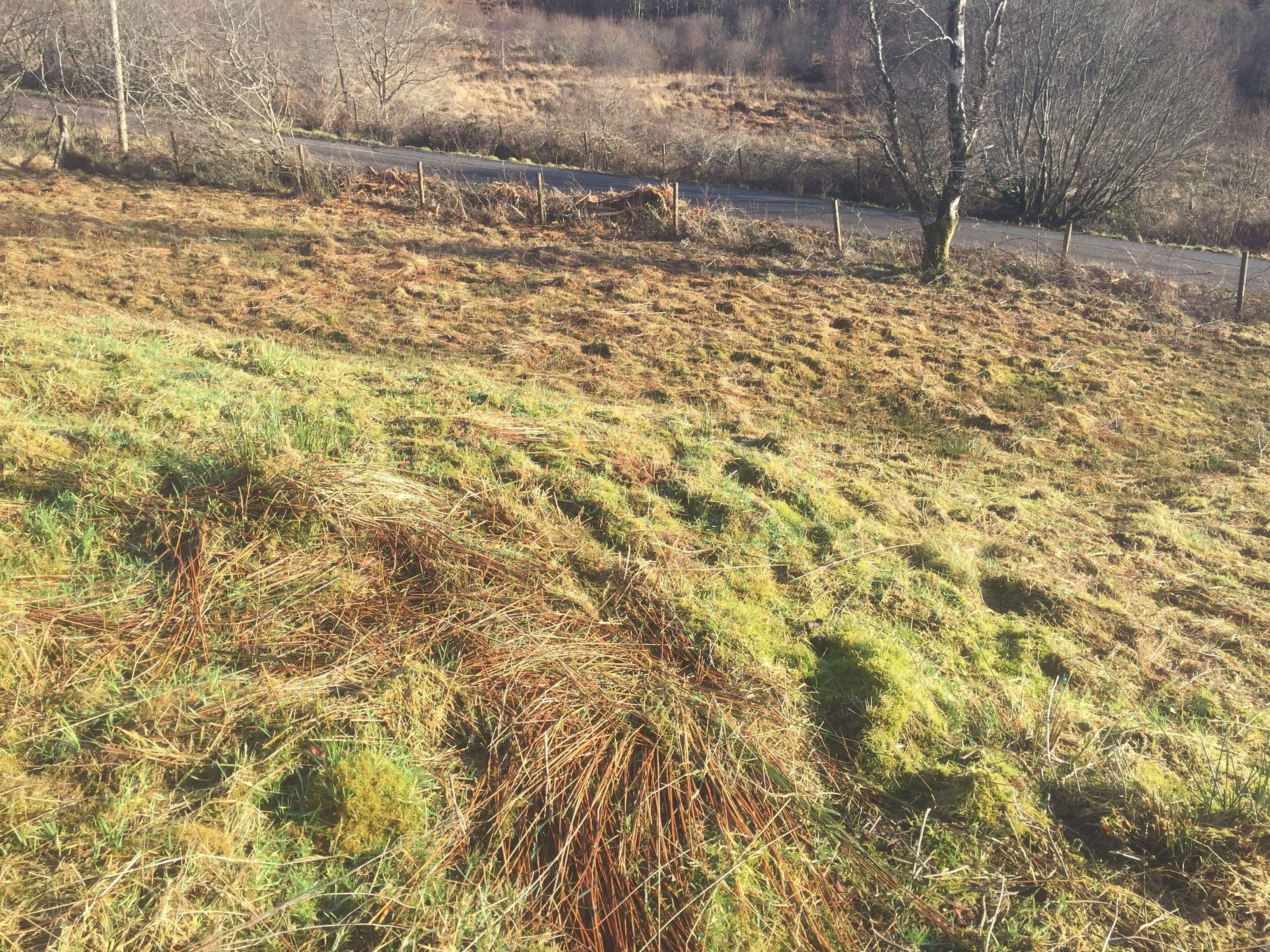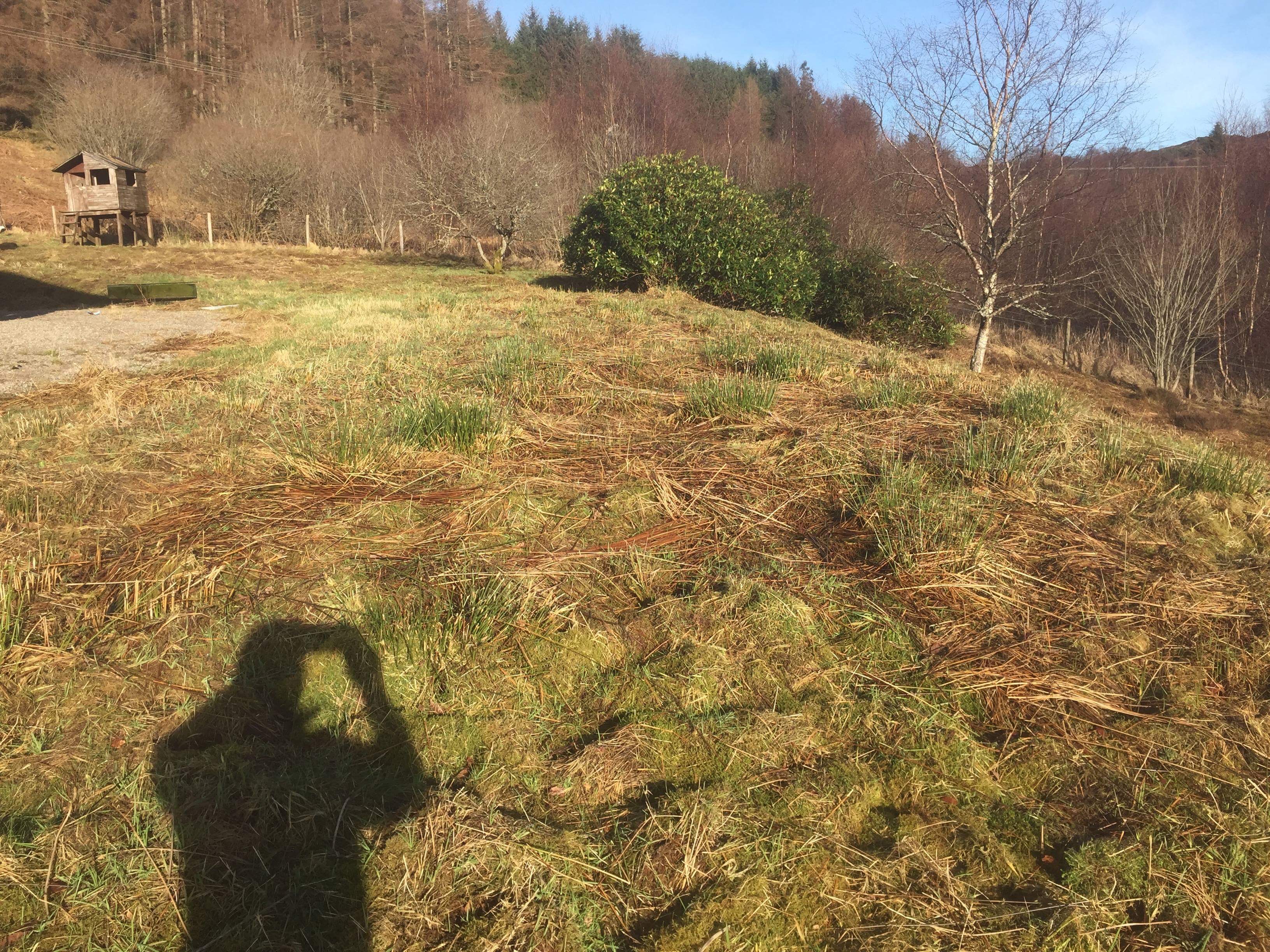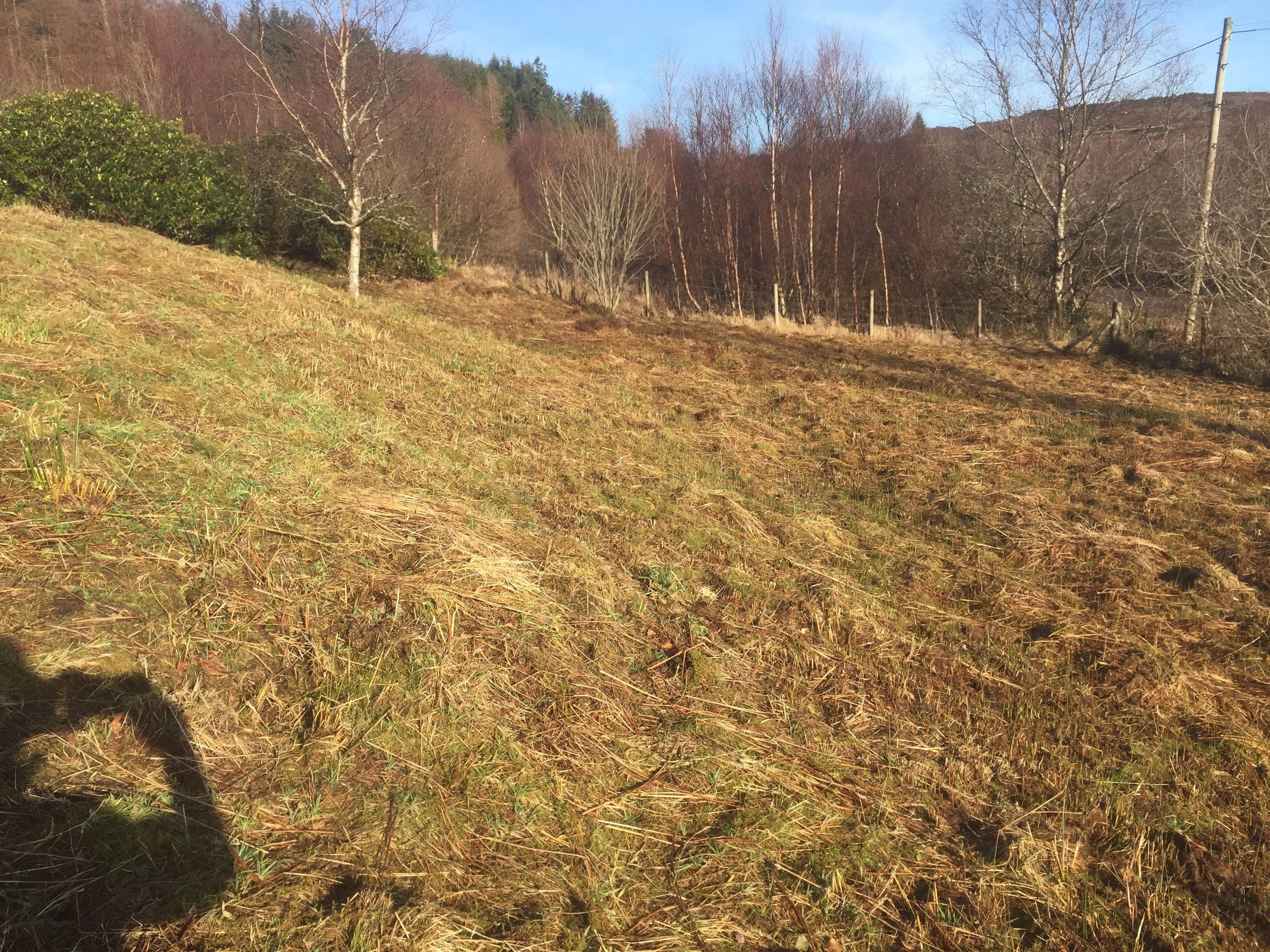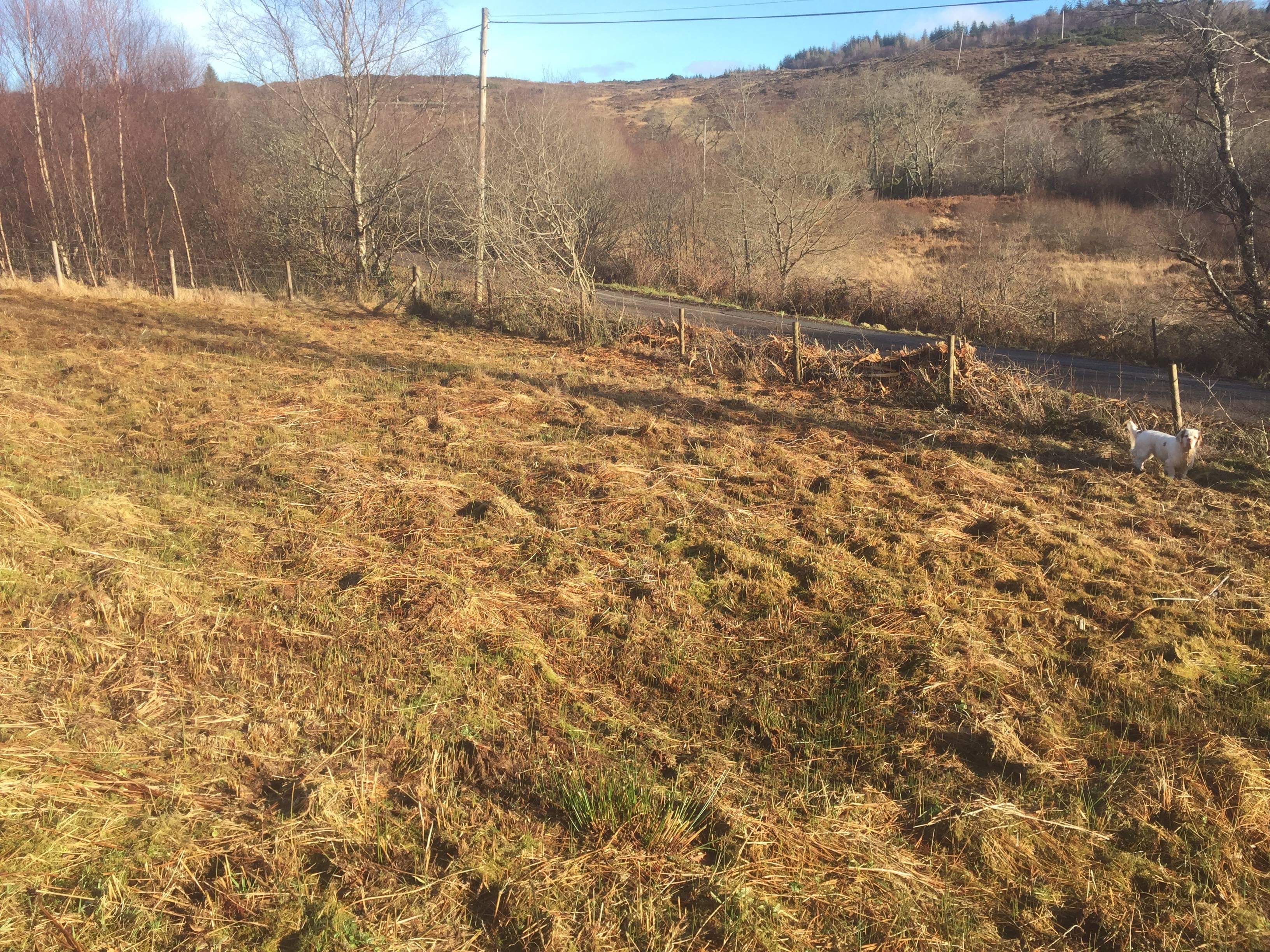This Forum will close on Wednesday 27 March, 2024. Please refer to the announcement on the Discussions page for further detail.
Large overgrown highland garden




Hi everyone, I’m looking for your advice please. I have recently bought a new house and the garden hasn’t been looked after for a good few years. The house is in the West Highlands of Scotland and therefore gets an awful lot of rain.
The garden is like a field on a slope. It’s full of reeds and it feels like I’m walking on about 6 inches of moss. There are some areas where the water actually comes up over my boots when I walk on it.
Some people have told me to just keep strimming it, others have said I should get a small digger and remove the top layer off the whole thing and then re-seed.
I‘ve attached a few photos.
Thanks in advance for any help you can offer.
0
Posts
Not sure if that has ever been a garden. It looks more like rough pasture. My first thought would be to get a farmer in to plough it and harrow it..............
What an opportunity for planting a wet garden full of moisture loving plants !
Willows , Alders , Birches , Dogwoods , certain bamboos (Phyllostachys) , Liquidambar (Sweet Gum) , Pin Oak (Quercus palustris) (good autumn colour) ; for a different conifer try Taxodium distichum or Swamp Cypress ! Rhododendrons and Camellias plus Hydrangea paniculata will grow well . Intersperse these with numerous ferns and Hostas and you've the basic framework for an interesting garden .
Strim pathways to access the plants but leave in a semi-natural state . Leave the reeds too !
Just a few of what will grow in wet ground .
There are numerous perennials which will thrive as well ; too many to name ! Google will give lists of plants for sodden ground .
Hope this gives a bit of inspiration
Thanks ?, this is why I asked. I was trying to solve a problem, you’re suggesting using the situation to its best potential. Didn’t know there was such a thing as a “wet garden”, I’ll look into the plants youve suggested thanks.
I would get a couple of pigs to get the weeds out.
you could put a pond at the bottom of the slope and run land drains into it, if its really wet you could run the land drains into a fake 'naturalistic' stream running down the slope into the pond. Running water and drained land :-)
Probably a really long shot, but you could try contacting Beechgrove Garden, or at least check out the website. http://www.beechgrove.co.uk/contact-us
They have done features on overgrown and unloved gardens in the past.
That looks like my sheep field! I live high up in the Pennines
What you have there is not reed, but soft rush, Juncus effusus. It grows on wet ground, but it also holds water within its clumps, so it drains more poorly, and seeds itself profusely. The seedlings will grow even in soil that is not so wet, thus extending the soggy areas. It gradually forms layers of peaty soil.
It is not deep rooted and it is possible to remove clumps relatively easily. though not very quickly, using a fork to loosen it from the edges. You will find that large clumps are formed from many small clumps and these can then be pulled out individually by hand. It is a case of divide and conquer - if you try to lift a whole clump it is very heavy because of the water content.
It will re-root if left on the surface of wet ground, but you can stack it and it will rot down. It withstands mowing and being eaten to the ground by hungry sheep, so strimming alone would not permanently remove it. It is tussocky to walk on so you cannot mow comfortable paths. I have not tried, but maybe strimming and then covering to block out light for several months would work.
Paul has given you some excellent advice on possible plants to grow, but I would disagree with him on leaving the rushes entirely, because they are so invasive, and for a different, more personal reason, on the bamboo as it would look so alien in that setting.
My suggestion would be to plant some of the trees he has suggested, and lots of dogwoods nearer the bottom of the slope. The shade from the dogwoods will slow down the rushes and they sucker themselves to form thickets that make good cover for birds. The different coloured stems are invaluable in a long dark winter. You could maybe hire a digger to cut drainage channels to help drain some more water away from the higher part and then try some of the other planting suggestions, but the drains will need regular clearance as the rushes will re-colonise.
Rhododendrons will not flourish in waterlogged ground, but if you manage to get some established, then they and other shrubs will help to use some of the water and shade out the rushes.
The grass Deschampsia caespitosa and Marsh marigold both grow wild here and make a valuable contribution and so does Persicaria bistorta superba in my wet meadow, and there are plenty of of other lovely, bog loving plants. Your soil, like mine, is probably hardly ever dry! Bear in mind though that bog lovers, by their nature are almost all thugs, so you will have to referee in some places and just let them thug it out in others
On the plus side for rushes - they make good stepping stones in the boggy bits, and field voles eat the pith from the stems. After heavy snow here, you can find little pile of snipped up rushes everywhere in the fieild near their nests In the past they were cutt for animal bedding and even for floorcovering in the houses, and used for rush lights, by soaking in tallow. Our local church has an annual Rushbearing service every August, when it is decorated with plaited rushes.
In the past they were cutt for animal bedding and even for floorcovering in the houses, and used for rush lights, by soaking in tallow. Our local church has an annual Rushbearing service every August, when it is decorated with plaited rushes.
Thanks to everyone for giving their help. “Buttercupdays” thank you very much for taking the time to go into so much detail.
I will, this evening, be googling all of the aforementioned plants as well as finding out how exactly I go about with drainage.
The removal process of the soft rush will start this weekend I have a feeling it’s going to be a very long and laborious job!
Thanks again everyone.
Good luck with the removal process. You can probably tell I know far too much about this plant
I would be best, I think, to start from one of the higher points and concentrate on a small area at a time, both so that you can see some results and also to give the slightly better drained bits chance to dry out even more and allow the grass some hope of recovery, or enable planting.